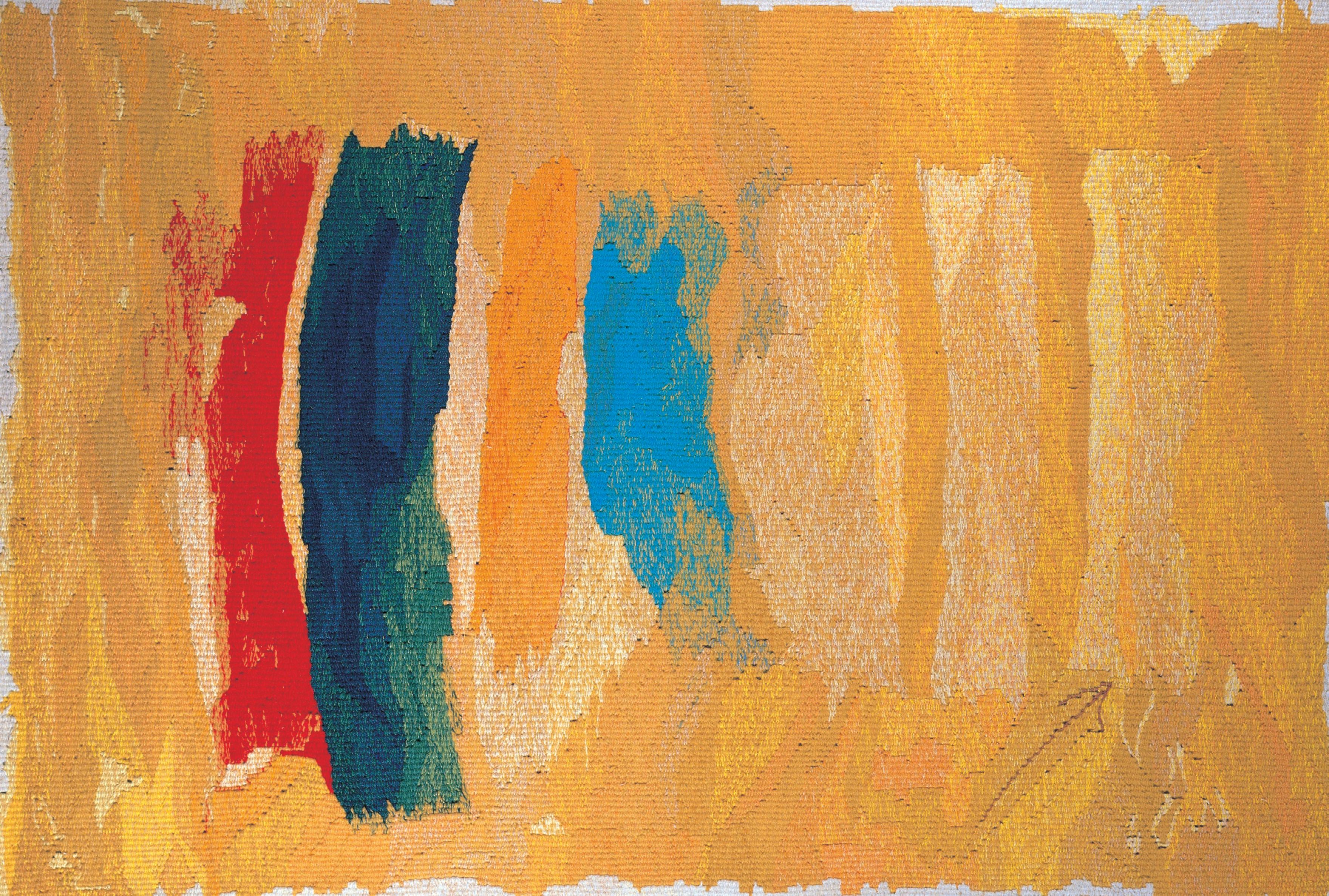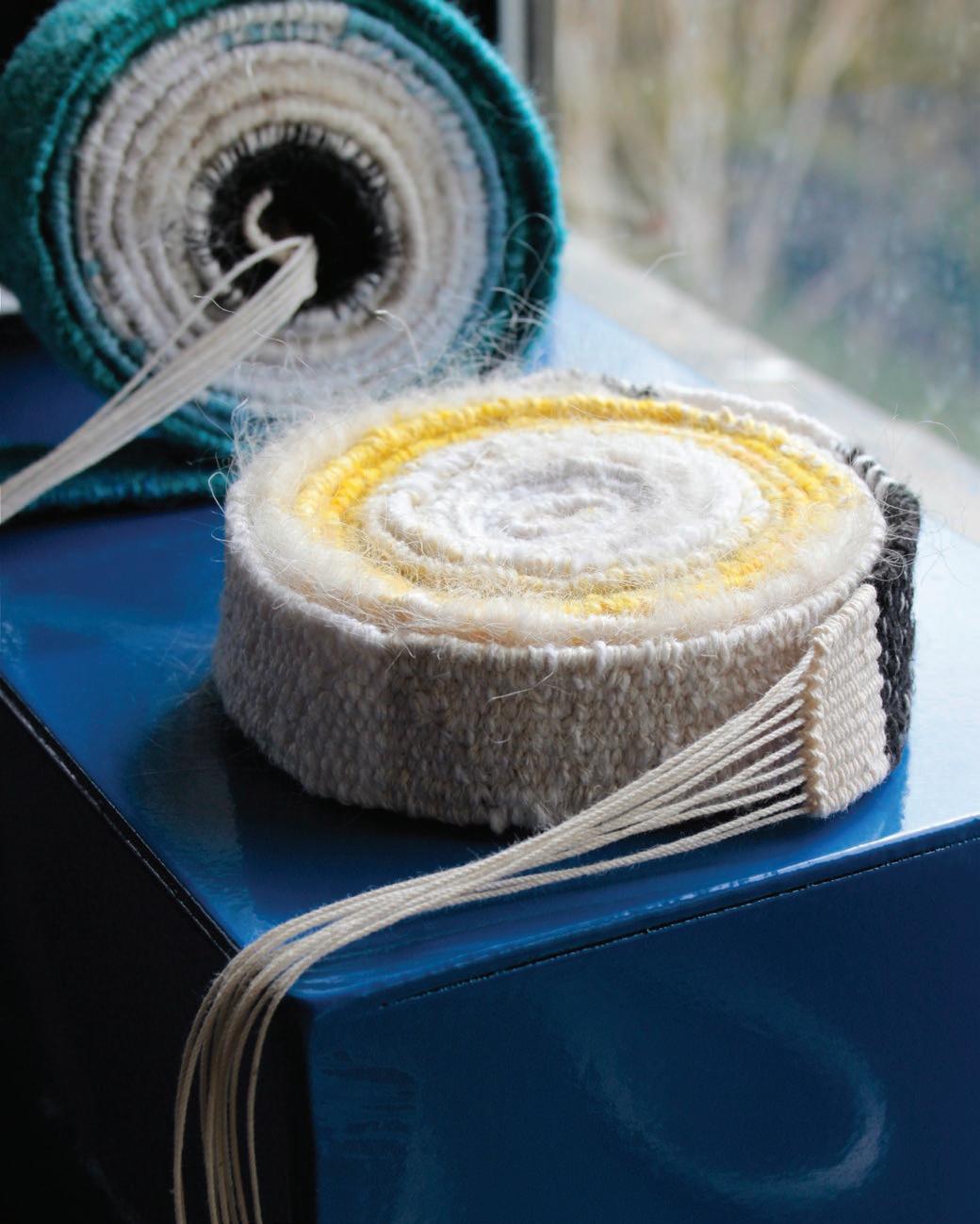
5 minute read
Jilly Edwards: Tapestry into the 21st Century – Fiona Mathison
Samplers (3 reels), 2009 (detail) Cotton warp. Wool, cotton, linen weft. On steel powder. coated box. 3cm x 200cm
Jilly Edwards: Tapestry into the 21st Century
Advertisement
The speed of living and working in the developed world has moved from fast to super fast; information is available to and demanded from us at the touch of a button and we are in constant communication with others for both work and social activity. Inquisitiveness is an essential prerequisite for both the enjoyment and success of our lives.
Tapestry weaving is in many ways the antithesis; a slow process, intricate and time consuming; every decision requires methodical physical action over hours not minutes. There are no shortcuts, no mechanical or electronic gizmos: tapestry artists usually work alone. Inquisitiveness is essential to the weaver too, but answers are yielded slowly, and the skills required, though simple at the start, become increasingly exacting as the process seduces the artist into making ever greater demands of themselves, their time and the medium; weaving becomes an all consuming passion. Hardly surprising then that tapestry has all but disappeared as a medium of choice for younger artists. Lack of time and the growing possibilities of the virtual world have made the tactile world around us shrink. The eye, now so familiar with looking at a screen prefers clean polished surfaces and dust free environments. Though the examination of this medium of tapestry could yield fascinating insights and ideas that relate to structure and time in a much more conceptual and contemporary way, the medium’s history has been too strongly linked to painting and the pictorial, which makes such developments unlikely. Of course tapestry is visual, but it is not just an image, there is very much more to it than that.
8/9
Jilly Edwards studied at Edinburgh College of Art Tapestry Department from 1980 to 82, which was quite naturally in that tradition, owing its existence to the Dovecot Tapestry Studios in Edinburgh. The purpose was to train artist weavers, so working with images to develop ideas about colour and composition, developing drawings and colour sketches were all part of a whole gamut of skills including weaving that were practiced by students of tapestry like Jilly. Jilly had come to Edinburgh with a keen interest and quickly developed that all consuming passion that defines the dedicated tapestry weaver. Over the years and in many parts of the country Jilly has promoted the craft, run a dedicated gallery, involved national and international art organisations and stimulated funding. Throughout her career she has continued to weave, taken time out to study, re-investigate and develop her own practice. The strong authentic voice of this artist developed after she left Edinburgh. It came through the desire to relate weaving, its intimate and meticulous processes with notions of time and place, as she travelled across Australia. The process began with a written and visual record made in the moment, an aide-mémoire. These were then used, not to copy but to recollect her daily experiences and take them into weaving. In abandoning the need to copy the notes, she created for herself a way of articulating ideas directly through weaving. Words were attached quite naturally to threads and woven in; a moment is recalled, and the place in that moment. The inventiveness and directness of her weaving speaks of new things discovered, the unexpected, the adventure, the experience remembered. Now an essential part of her practice Jilly has allowed the process of weaving itself to become the means of expression, a more direct authentic and meaningful way of referencing personal experience. These small works are often rolled up along the length of the warp, returning the medium to one that could be easily
10/11
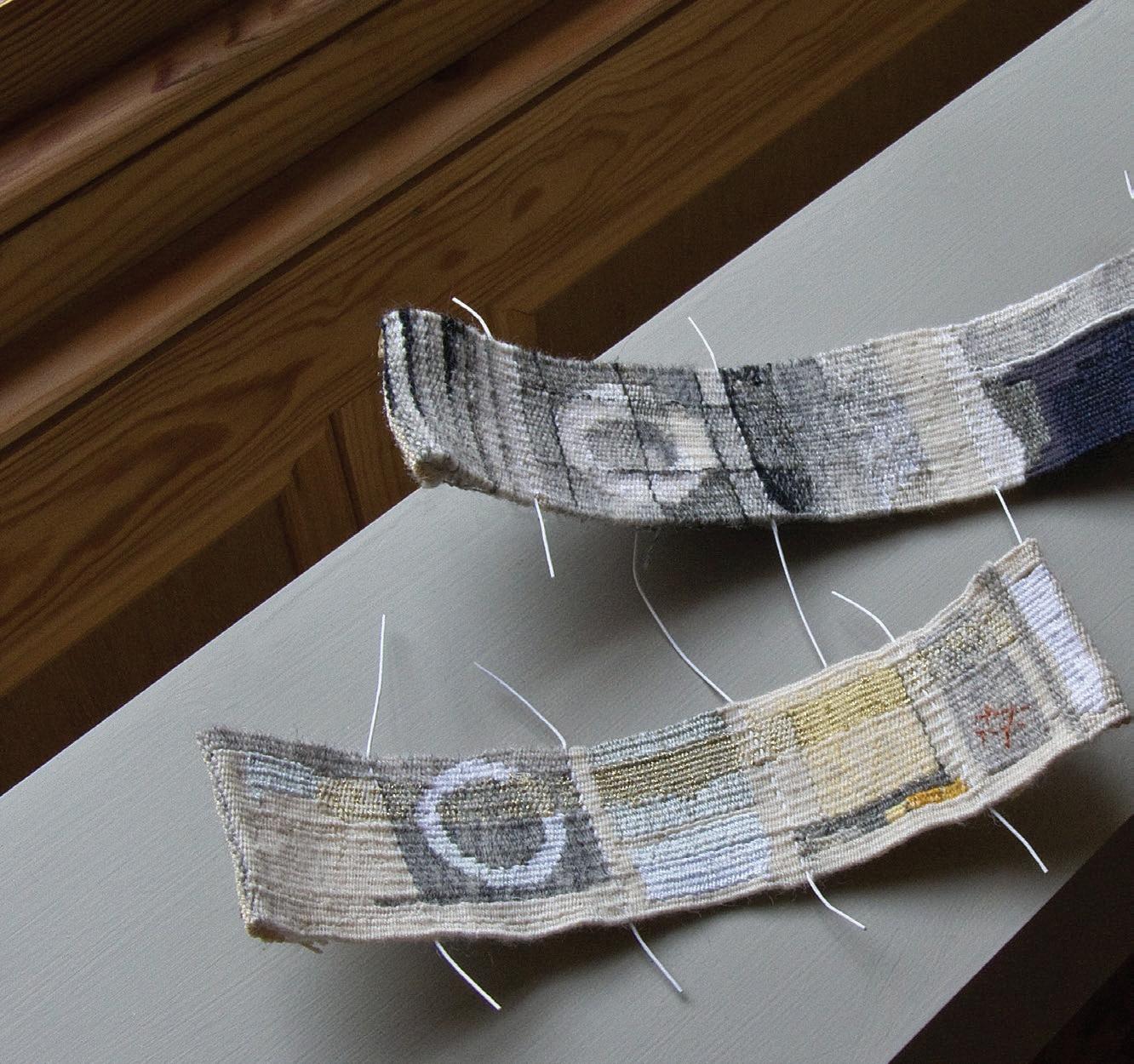
From Exmouth to Budleigh Salterton, 2008. From Dawlish to Totnes, 2008 Cotton warp. Wool, cotton, linen weft. 5cm x 22cm

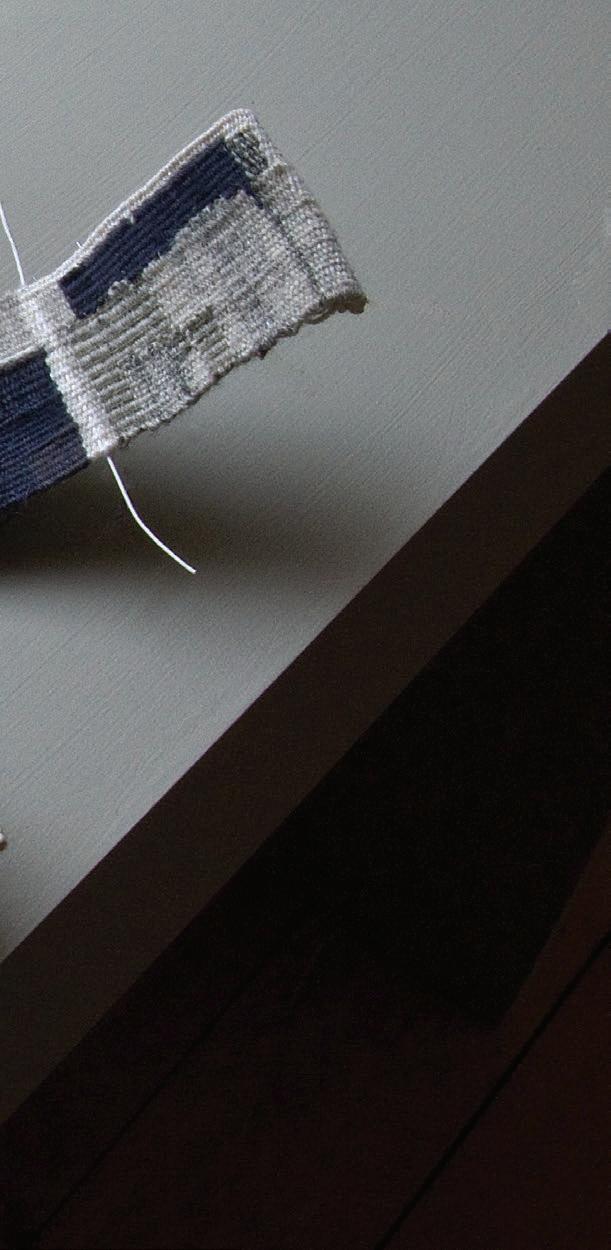
Memories of the Jurassic Coastal Path, 2008 Memory monofilament warp. Wool, cotton, linen weft. 7cm x 35cm including warp ends
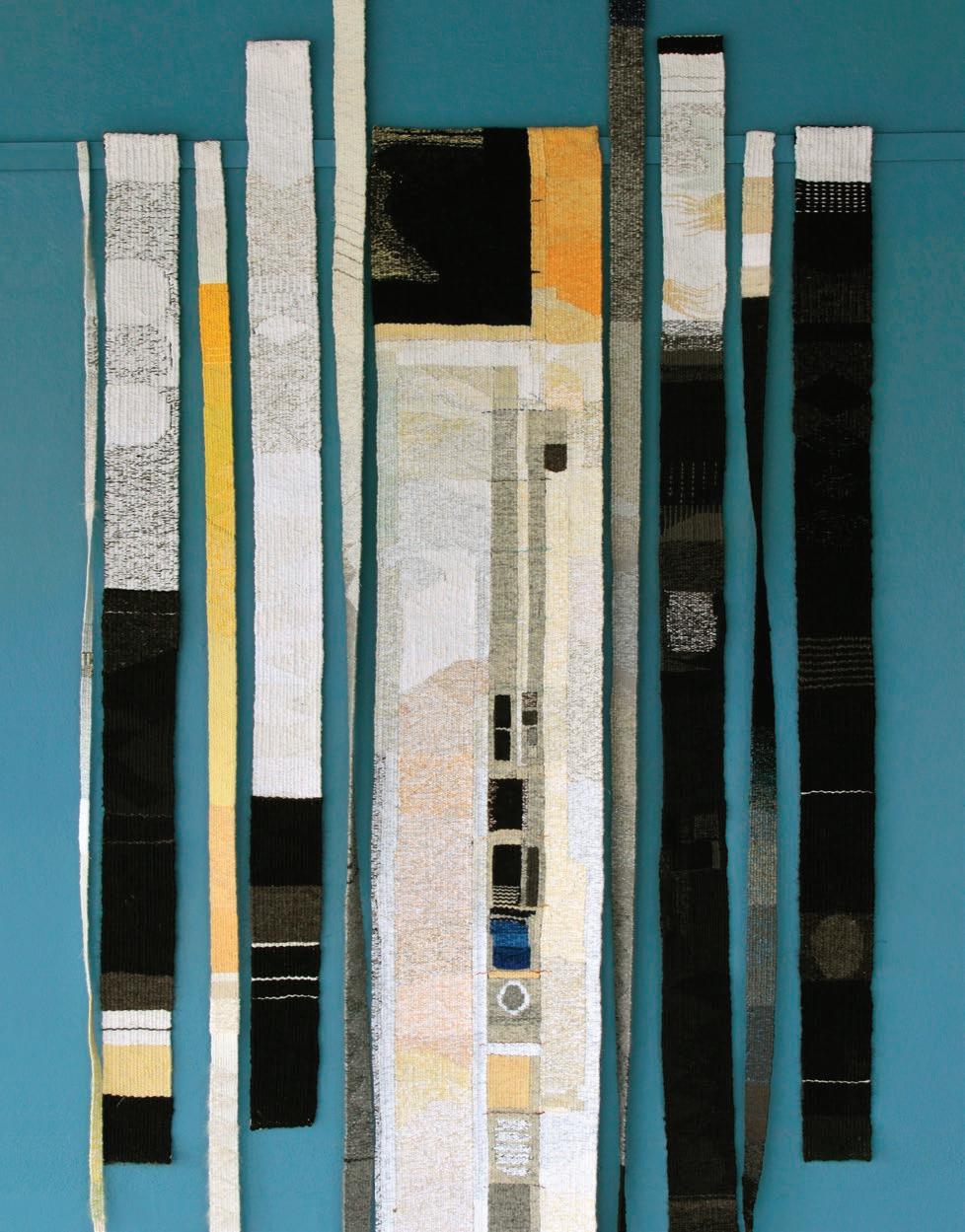
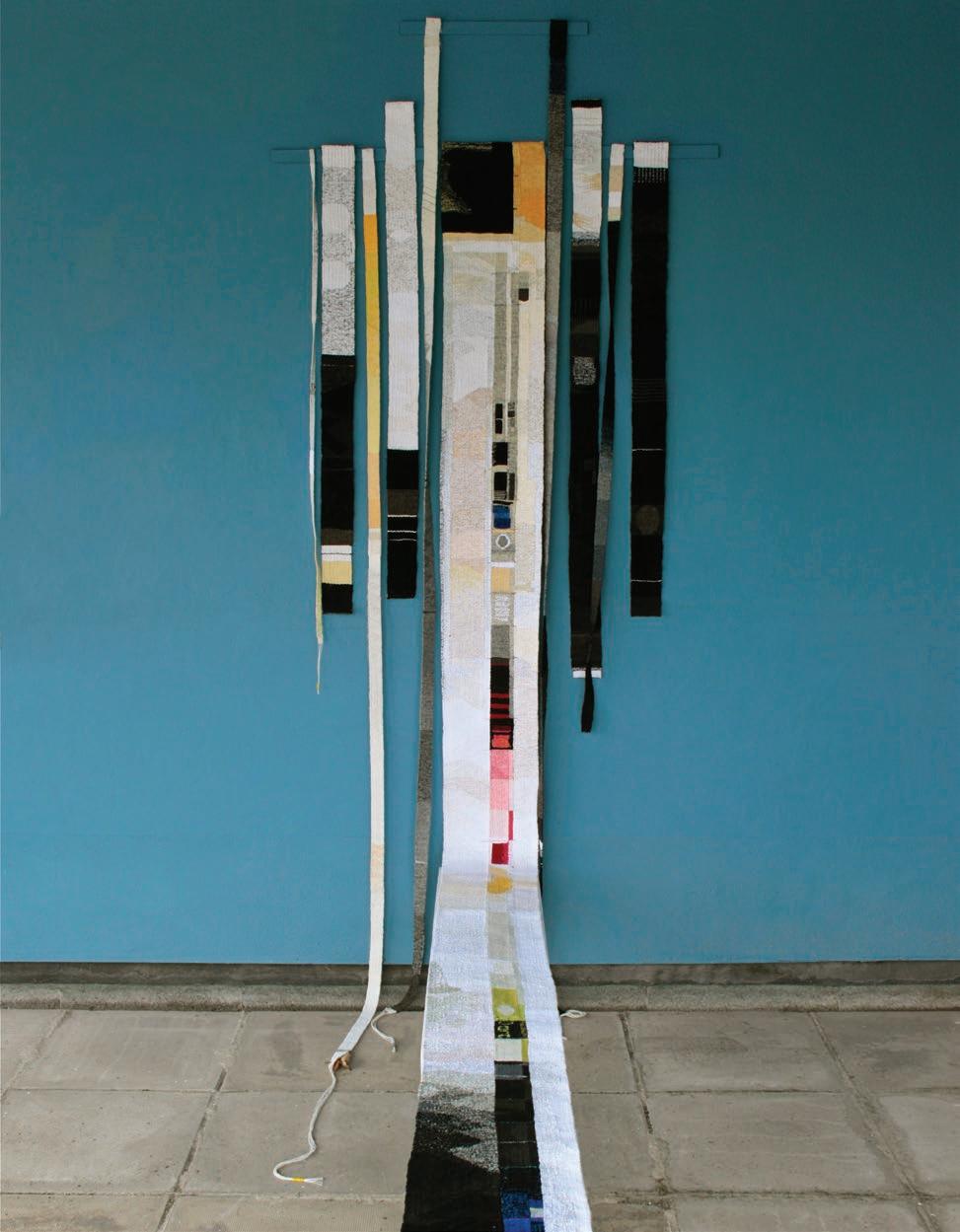
Walk along the Dart, 2009 10 strips of various widths and lengths. Cotton warp. Wool, cotton, linen, chenille weft. centre piece: 20cm x 400cm
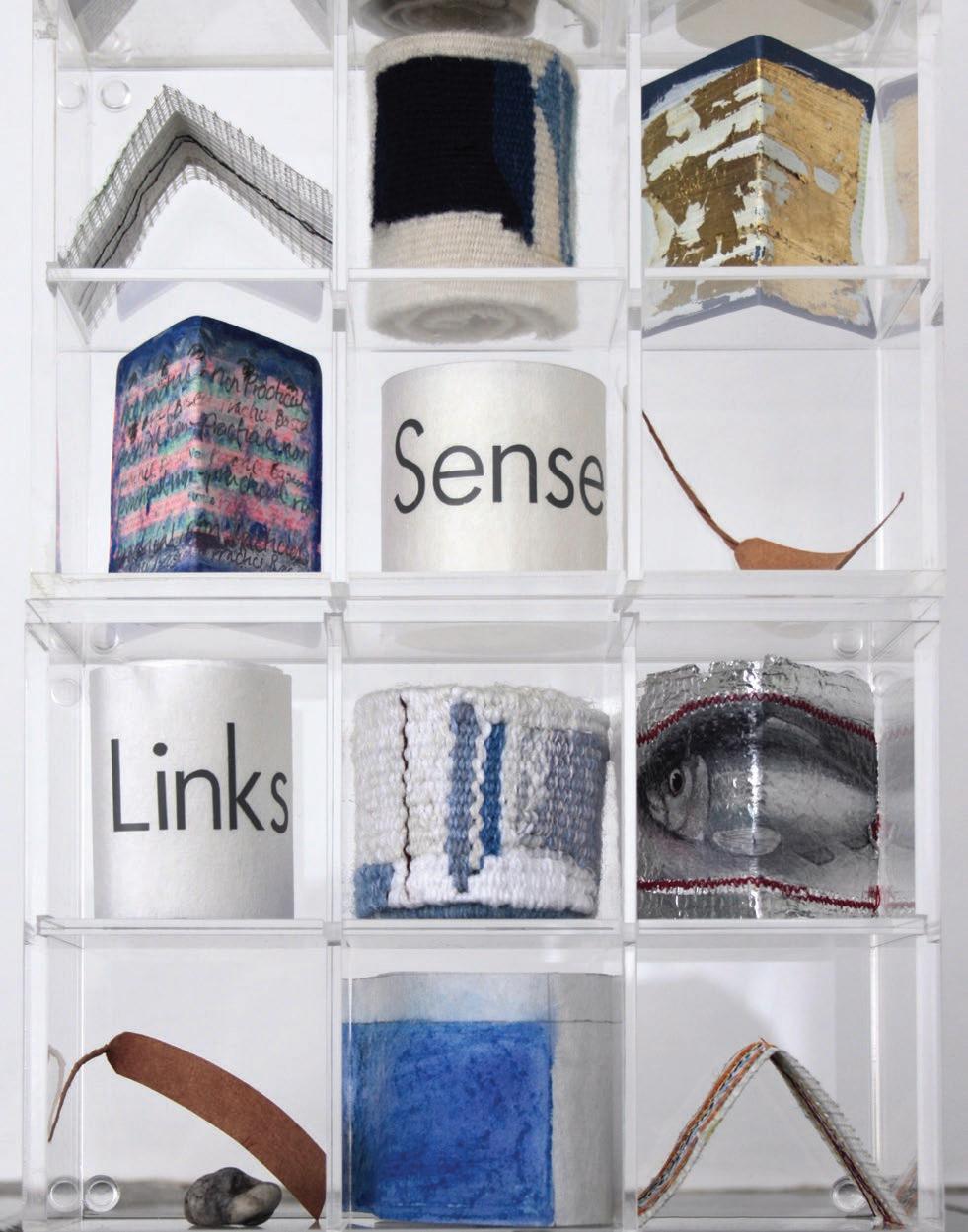


Travellers Samples, 2009 Mixed media: woven tapestry, drawing on shoji paper, lettering on paper, railway ticket, plasterboard gauze, shells, stones & paper price tags. Each 6 segmented acrylic box 17.5cm x 13cm x 6cm
carried but also unwound so that specific moments in its length could be revisited and re-examined. This way of making connections with time, place and memory has continued to dominate her work. Her recent installation at High Cross House, A Sense of Place, records her research and thoughts about past and present events there. The rolled strips of weaving just beginning to unravel were placed directly on a window sill amongst the original objects. Music written by Nigel Morgan, part of the installation at Jilly’s invitation, rose up the stairwell to fill the air. Jilly is aware of contemporary thinking and its interest in mixing disciplines but also of the importance of music in that place.
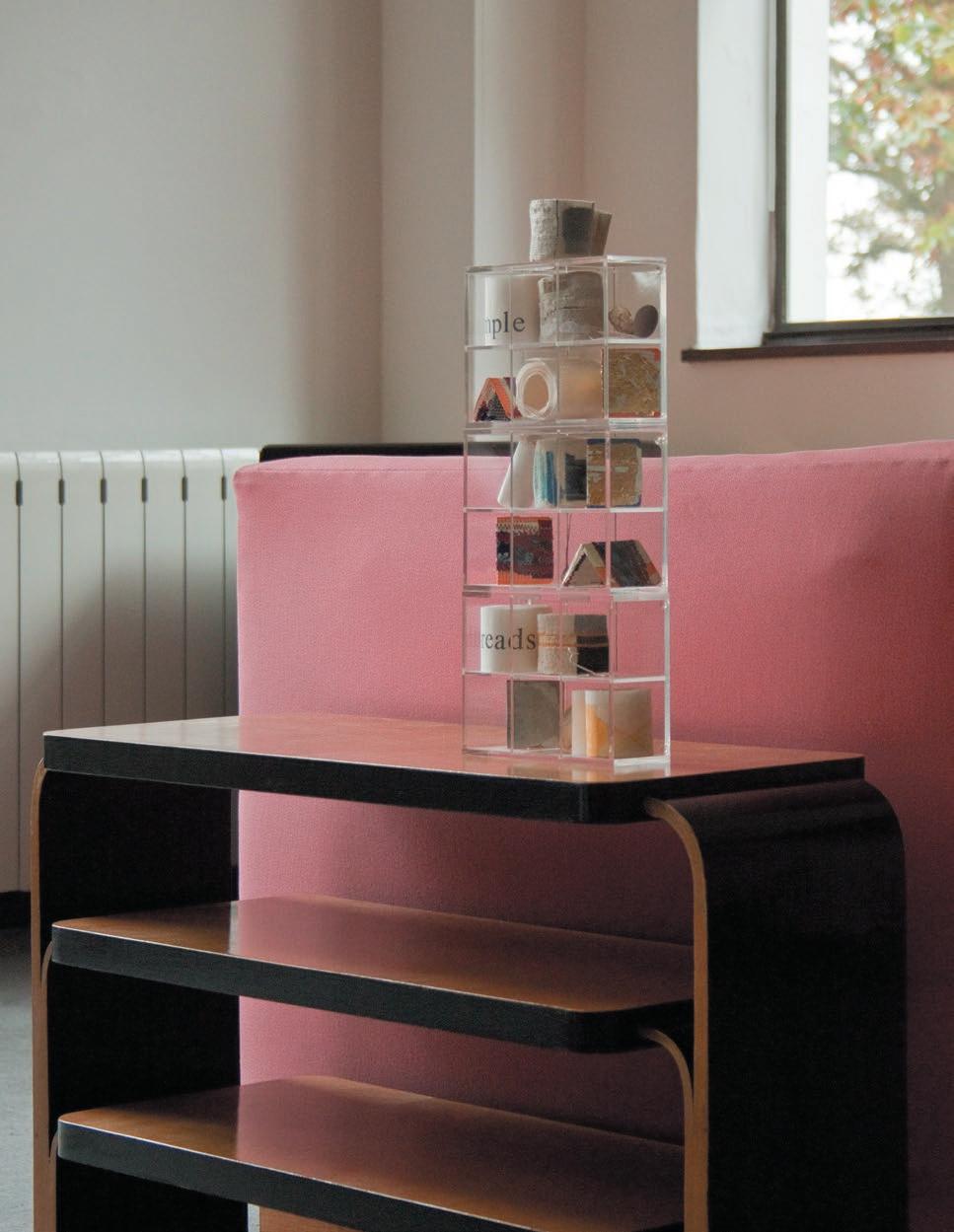
This is an example of a successful cross-disciplinary work, but the desire to make connections between media is not always as successful. Tapestry is like a performative art, it needs a live audience. It also needs slow time, time away from our hectic lives to be fully appreciated. But for this it also needs to be of a quality to bare that scrutiny, and that takes us back to the demands we make of ourselves and the medium. These are not the demands of definitions and restrictions to defend a threatened craft, but of energy and imagination to give a medium new life. It is the energy of a dedicated few that stimulates and keeps tapestry alive, and they are often those who have worked in the medium for many years, like Jilly Edwards. What they all want to know is will there be another generation of tapestry weavers? And where can they come from?
Fiona Mathison Artist and Lecturer in Intermedia, previously Tapestry, Edinburgh College of Art
12/13
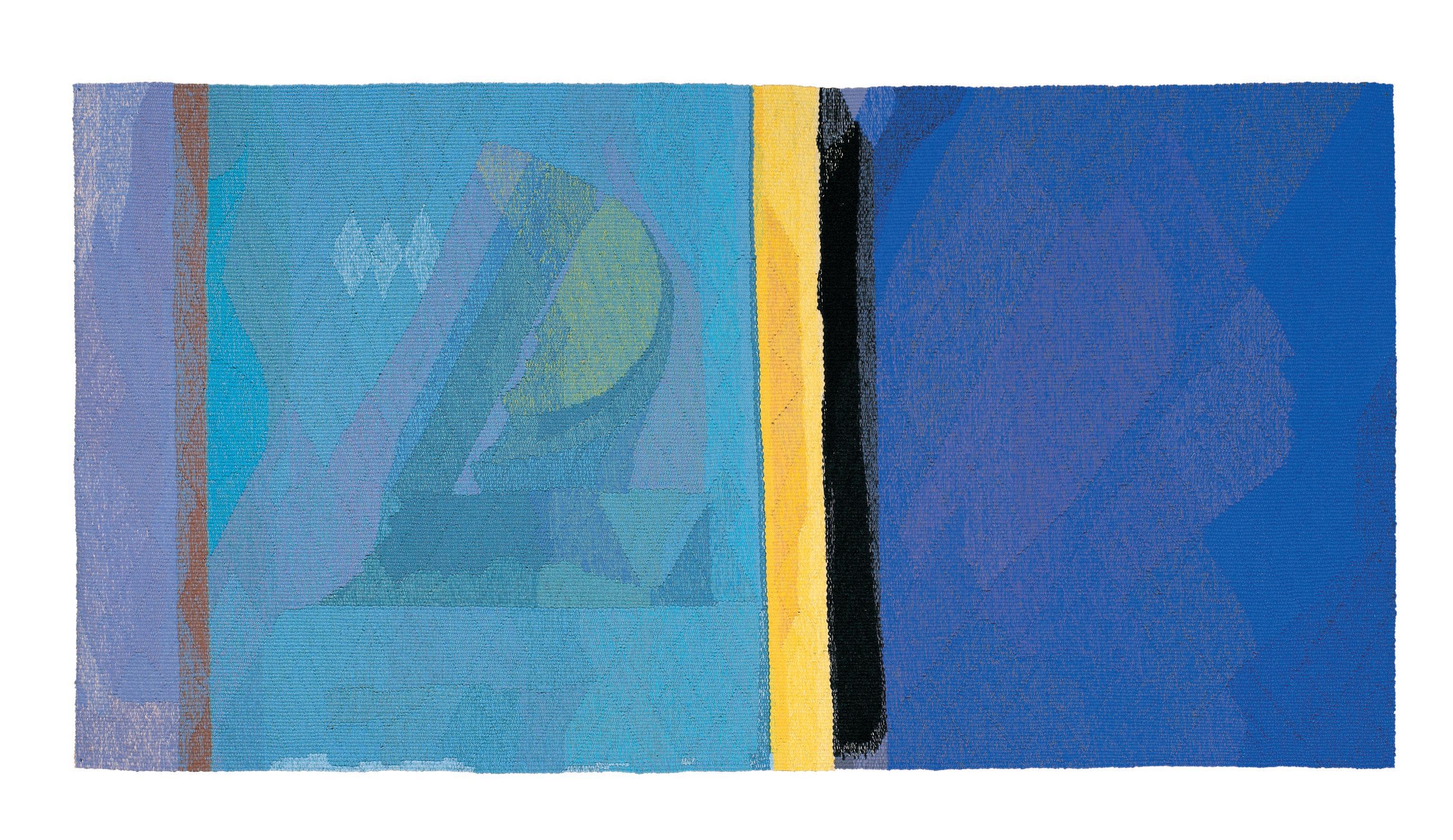
Prism of Porthmeor, 2001 Cotton warp. Wool, cotton and linen. 60cm x 115cm Collection of Elgan Kobe, Japan
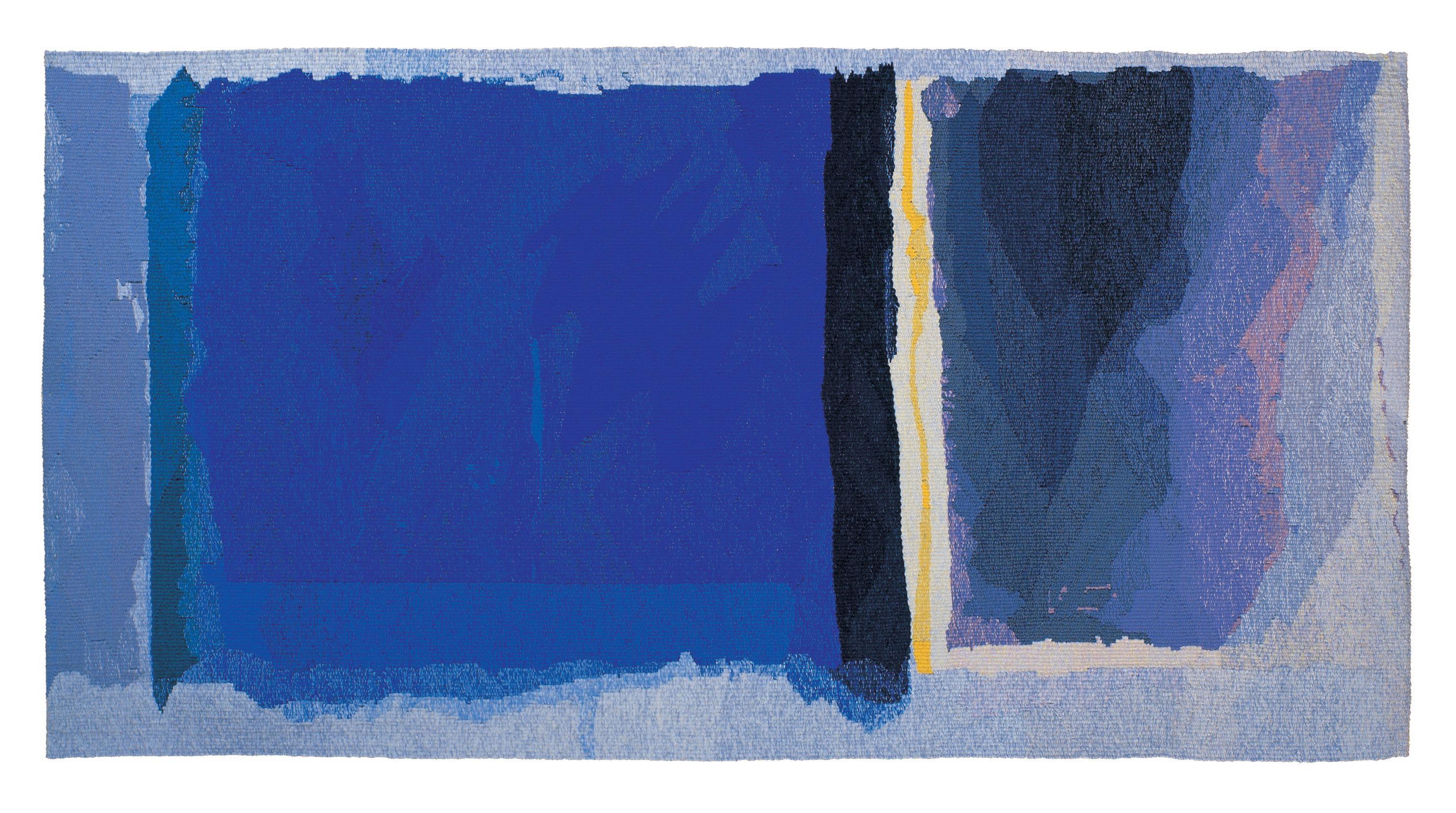
Penwith Passage, 2001 Cotton warp. Wool, cotton and linen. 60cm x 120cm Collection of Elgan Kobe, Japan
